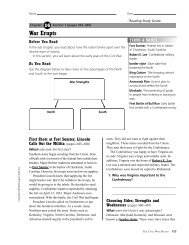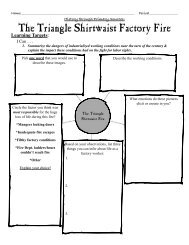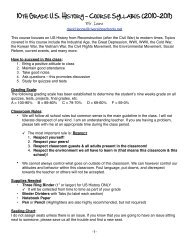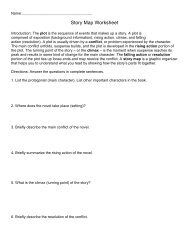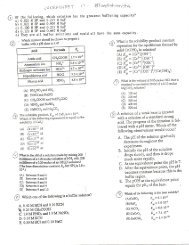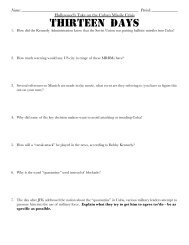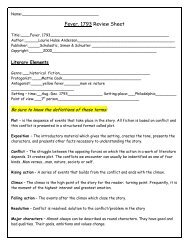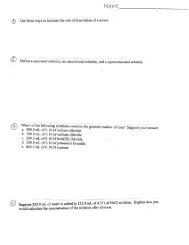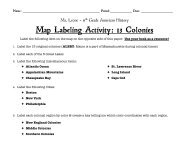Chapter 16 Text
Chapter 16 Text
Chapter 16 Text
Create successful ePaper yourself
Turn your PDF publications into a flip-book with our unique Google optimized e-Paper software.
Likewise, for the reaction between NH3 and H2O (Equation <strong>16</strong>.5), we have<br />
<strong>16</strong>.2 Bransted-Lowry Acids and Bases 617<br />
ise<br />
>ts<br />
Ty<br />
•<br />
Base<br />
H2O(0-<br />
Acid<br />
Conjugate<br />
acid<br />
remove H<br />
Conjugate<br />
base<br />
[<strong>16</strong>.8]<br />
SAMPLE EXERCISE <strong>16</strong>.1<br />
(a) What is the conjugate base of each of the following acids: HC1O4; H2S; PH4+;<br />
HC03-?<br />
(b) What is the conjugate acid of each of the following bases: CN ; SO42 ; H2O;<br />
HC03"?<br />
Solution<br />
Analyze: We are asked to give the conjugate base for each of a series of species and to<br />
give the conjugate acid for each of another series of species.<br />
Plan: The conjugate base of a substance is simply the parent substance minus one proton,<br />
and the conjugate acid of a substance is the parent substance plus one proton.<br />
Solve: (a) HC1O4 less one proton (H+) is C1O4~. The other conjugate bases are HS~,<br />
PH3, and CO32~. (b) CN~ plus one proton (H+) is HCN. The other conjugate acids<br />
are HSO4~, H3O+, and H2CO3.<br />
Notice that the hydrogen carbonate ion (HCO3~) is amphoteric: It can act as either<br />
an acid or a base.<br />
PRACTICE EXERCISE<br />
Write the formula for the conjugate acid of each of the following: HSO3~; F~;<br />
P043~; CO.<br />
Answers: H2SO3;HF;HPO42-;HCO+<br />
SAMPLE EXERCISE <strong>16</strong>.2<br />
The hydrogen sulfite ion (HSO3~) is amphoteric. (a) Write an equation for the reaction<br />
of HSO3~ with water, in which the ion acts as an acid, (b) Write an equation for<br />
the reaction of HSO3~ with water, in which the ion acts as a base. In both cases identify<br />
the conjugate acid-base pairs. {-<br />
$<br />
Solution<br />
j<br />
Analyze and Plan: We are asked to write two equations representing/reactions between<br />
HSO3~ and water, one in which HSO3~ should donate a proton to^Water, thereby acting<br />
as a Br0nsted-Lowry acid, and one in which HSO3~ should accept a proton from<br />
water, thereby acting as a base. We are also asked to identify the conjugate pairs in<br />
each equation.<br />
Solve: (a)<br />
(fltj) + H2O(Z) ^^ SO32~H) + H3O+(oj)<br />
The conjugate pairs in this equation are HSO3~ (acid) and SO32~~ (conjugate base); and<br />
H2O (base) and H3O+ (conjugate acid).<br />
(b)<br />
HSO3~(a^) -I- H2O(Z) ;=± H2SO3(^) + OtT(aq)<br />
The conjugate pairs in this equation are H2O (acid) and OH" (conjugate base); and<br />
HSO3~ (base) and H2SO3 (conjugate acid).<br />
PRACTICE EXERCISE<br />
When lithium oxide (Li2O) is dissolved in water, the solution turns basic from the<br />
reaction of the oxide ion (O2~) with water. Write the reaction that occurs, and identify<br />
the conjugate acid-base pairs.<br />
Answer: Q2~(aq} + H2O(I) ^=^ OH~(aq] + OH~(flg). OH" is .the conjugate acid of<br />
the base O2~. OH~ is also the conjugate base of the acid H2O.



